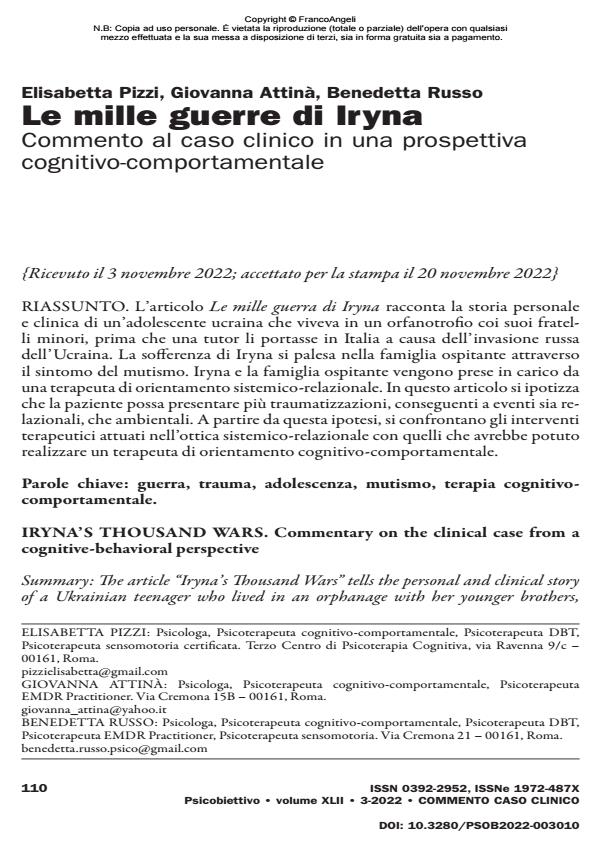Iryna’s thousand wars. commentary on the clinical case from a cognitive-behavioral perspective
Journal title PSICOBIETTIVO
Author/s Elisabetta Pizzi, Giovanna Attinà, Benedetta Russo
Publishing Year 2022 Issue 2022/3
Language Italian Pages 6 P. 110-115 File size 629 KB
DOI 10.3280/PSOB2022-003010
DOI is like a bar code for intellectual property: to have more infomation
click here
Below, you can see the article first page
If you want to buy this article in PDF format, you can do it, following the instructions to buy download credits

FrancoAngeli is member of Publishers International Linking Association, Inc (PILA), a not-for-profit association which run the CrossRef service enabling links to and from online scholarly content.
The article "Iryna’s Thousand Wars" tells the personal and clinical story of a Ukrainian teenager who lived in an orphanage with her younger brothers, before a tutor took them to Italy following the Russian invasion of Ukraine. Iryna’s suffering is revealed in the host family through the symptom of mutism. Iryna and the host family are followed by a systemic-relational therapist. The article assumes that the patient may present several traumas, resulting from both relational and environmental events Starting from this hypothesis, the interventions are compared between therapies implemented from a systemic-relational perspective with those who could have been adopted by a cognitive behavioral therapist.
Keywords: war, trauma, adolescence, mutism, cognitive-behavioral therapy.
Elisabetta Pizzi, Giovanna Attinà, Benedetta Russo, Le mille guerre di Iryna. Commento al caso clinico in una prospettiva cognitivo-comportamentale in "PSICOBIETTIVO" 3/2022, pp 110-115, DOI: 10.3280/PSOB2022-003010